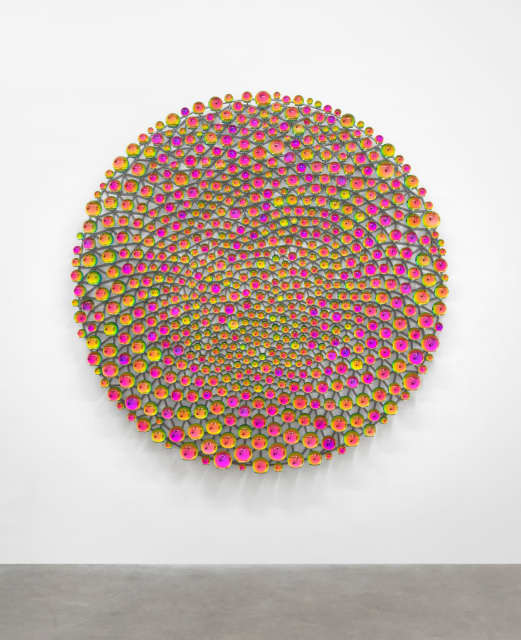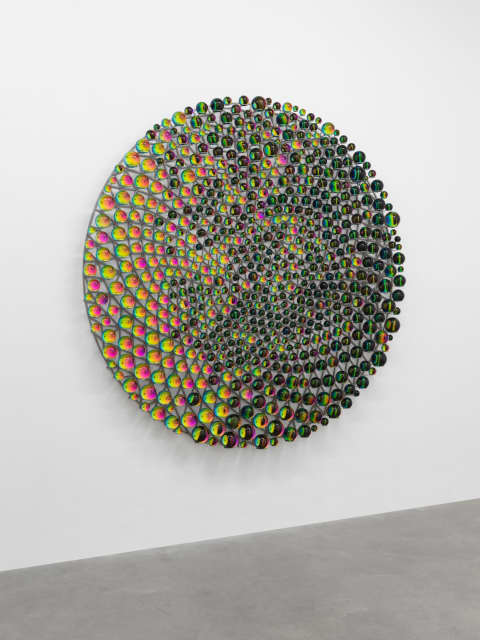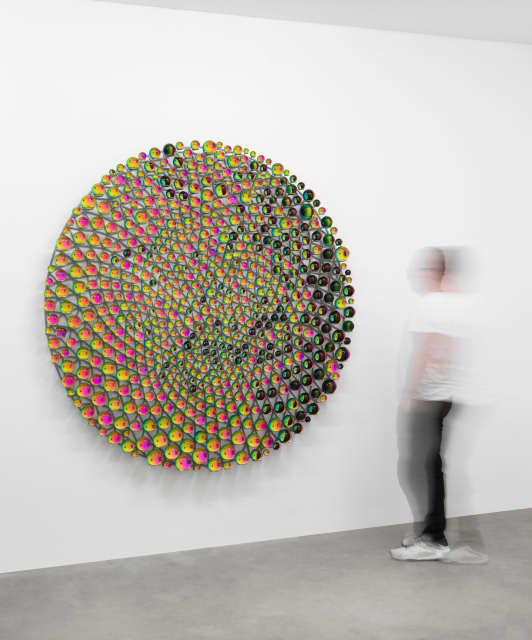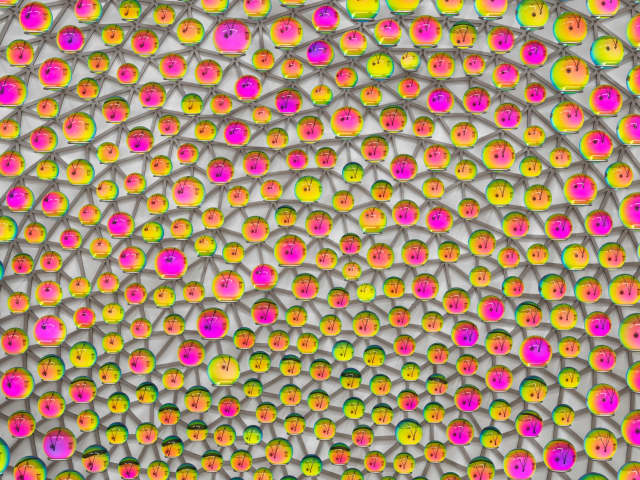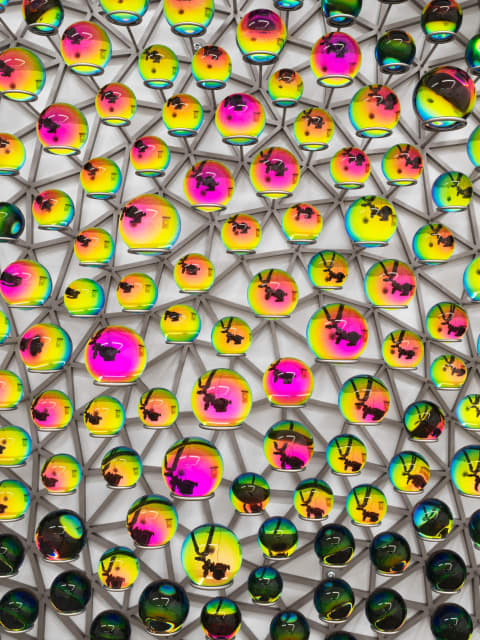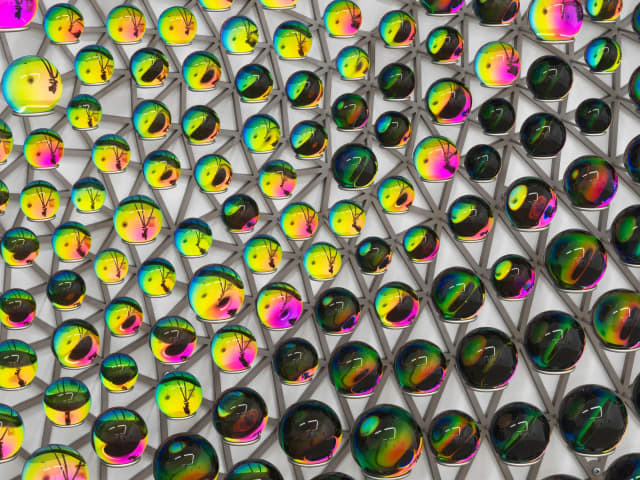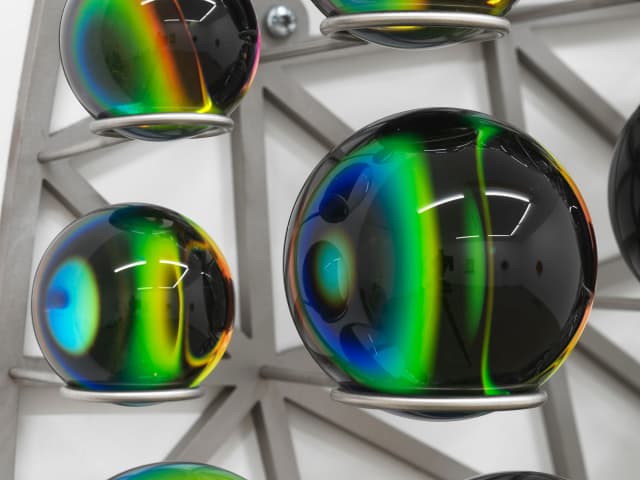A circular cluster of glass spheres is arranged seemingly at random on a wall. The formation radiates out from the centre in a geometry that is in fact regular but not easily identifiable to the viewer. Reminiscent of a gathering of large droplets or a clutch of eggs, the work was actually inspired by the geometry of a single-celled organism known as a diatom. Found around the world in oceans and waterways, these tiny algae produce a great deal of the planet’s oxygen and remove large amounts of carbon from the atmosphere. They are characterised by patterned shells made out of silica, called frustules. Their striking symmetry and geometrical complexity are an example of phyllotaxis, a spiralling growth pattern related to the golden ratio that is commonly found in nature and is familiar from pinecones, sunflowers, and Romanesco broccoli.
Seen from the front, all the spheres present explosions of bright warm tones. As viewers change their position in relation to the work, the colours shift, as rings of green and yellow appear and fill the spheres. Seen from an extreme angle, the spheres become first black and then clear. This effect results from covering the backs of the spheres with a special rainbow finish followed by a layer of black paint. The curved glass acts like a lens, causing the colour to fill the interior depending on the angle of view.
Eliasson considers these works to be optical devices that conjure new ways of seeing through tiny destabilisations and inspire viewers to engage with one another and to move about the space as they examine the spheres.
| Artwork details | |
Title |
Your iridescence |
Year |
2025 |
Materials |
Partially silvered colour-effect glass spheres, paint (black), stainless steel |
